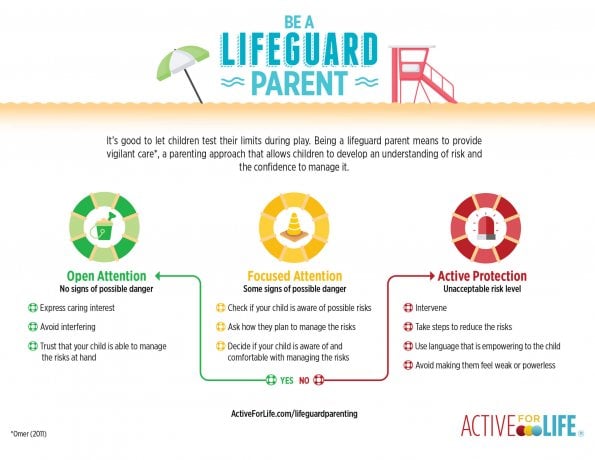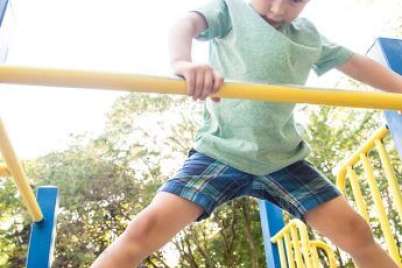
Say yes to adventure: How to be a partner in your child’s daring play
Jumping off a platform at a playground, climbing a tree, or balancing on a log. These are just some of the adventurous experiences you probably enjoyed as a child.
As parents, however, many of us find watching our children engage in risky play an anxiety-inducing experience. Somewhere along the line, we got the idea that a “good” parent doesn’t let their child take risks—yet learning to move with competence and confidence is inherently risky!
Experiencing freedom—and fear—is critical to building confidence, improving movement skills, and learning to solve problems.
So how can you be a supportive partner in your child’s play experiences?
Say yes to adventure
Children are good at knowing their own limits and avoiding risks they are not physically or emotionally ready for.
From running down a hill or learning to ride a bicycle, you can encourage your child’s sense of discovery by choosing to say, “Yes!” to adventurous play whenever possible.
Related read: What to do when you and your partner disagree on risky play
Be a supportive partner in your child’s play experience
When we offer support instead of direction, we allow children to develop self-confidence, build resilience, and give them opportunities to work through challenges.
Instead of saying, “Be careful!”, you can choose to ask your child:
- What is your plan… to climb the tree, get down from the rock, get across the creek, etc.?
- Where will you… put your foot, put the rock, jump off, etc.?
- What can you use… to get across, get over, use on your adventure, etc.?
- Who will be with you… or go with you, help you if…, etc.?
Think like a lifeguard
Lifeguards observe swimmers attentively and intervene only when necessary. Instead of controlling or interrupting the flow of your child’s play experience, be like a lifeguard during your child’s adventurous play.
Allow the children in your care to play with limited interference. Adjust your response depending on the level of risk associated with their choice of play. Start with open attention, and escalate to focused attention or active protection, depending on what you observe.

As parents and caregivers, stretching our comfort level with risky play experiences can be a little unnerving, however, when we aim to be supportive rather than directive, we allow our children to really shine.
Choose to be a partner in your child’s play by giving them the freedom to explore and discover. In doing so, you’re helping your child build critical life skills that will benefit them throughout their lifetime.






An incredibly important message in this day and age. I have often wondered how I would manage this as a parent and can totally relate to the anxiety when observing risky play. That said, I am gaining the confidence to let both my own kids and the students I teach learn to take what I call “smart, small risks” to help them along in their healthy development. Thanks for the great read!
I enjoyed reading this article. I have found myself closing my eyes a couple of times with my boys because it was too scary for me to watch. My boys are 7 and 4 now and they are super active and know their limits. I gave them space to get familiar with what their bodies can and can’t do. No emergency trips to the hospital yet!
Excellent article with some great tools to support our child’s play, thank you!